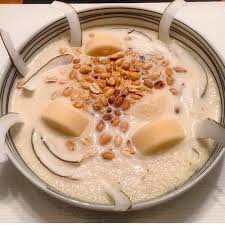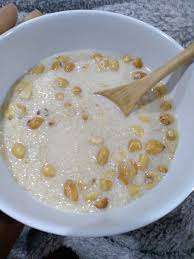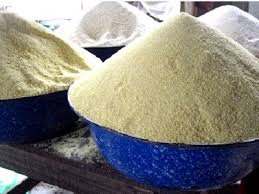Garri is a popular staple food made from processed cassava, consumed widely in West Africa, especially in Nigeria. While it is a key source of carbohydrates and energy for millions, the consumption of garri can have both positive and negative effects on health, depending on factors like preparation, quantity, and individual dietary needs.
On the positive side, garri is rich in carbohydrates, which provide energy and are essential for body functions. It also contains small amounts of fiber, aiding in digestion.
Because garri is widely available and affordable, it plays a crucial role in combating food insecurity in many parts of Africa. For people who rely heavily on starchy foods, garri offers an accessible and filling meal.
However, there are some concerns about the negative health effects of consuming too much garri. One issue is that improperly processed cassava contains cyanogenic compounds, which can be toxic if consumed in large amounts.
When cassava is not thoroughly fermented or soaked before processing into garri, it may retain these harmful compounds, which can lead to cyanide poisoning or a condition known as konzo, a neurological disorder that causes paralysis.
This risk is mitigated through proper processing methods, but in regions where these practices are not strictly followed, health problems can arise.
Additionally, the high carbohydrate content of garri, while providing energy, can also contribute to weight gain if eaten in excess, especially for those with sedentary lifestyles.
A diet high in carbohydrates and low in protein can lead to nutritional imbalances, affecting overall health. People with diabetes or those prone to blood sugar fluctuations should be cautious with garri consumption, as its high glycemic index can cause spikes in blood sugar levels.
Another effect of garri consumption relates to the potential irritation of the eyes and throat during its preparation. The drying and frying processes release fine particles, which can irritate the mucous membranes, leading to coughing and discomfort. Those involved in garri production, especially in traditional or rural settings, are most at risk for this type of irritation.
While garri is an essential and widely consumed food in many African communities, its effects on health vary depending on how it is processed and consumed. When prepared properly, garri provides a reliable source of energy and nutrients.
Nutritional Composition of Garri

1. Rich in Carbohydrates: Garri, made from processed cassava, is an excellent source of carbohydrates, which provide the body with energy. It is primarily composed of starch, making it a staple food for many people in Africa and other regions.
2. Source of Dietary Fiber: Garri contains a moderate amount of dietary fiber, especially if it is made from unpeeled cassava. Fiber helps in promoting healthy digestion, reducing constipation, and supporting regular bowel movements.
3. Presence of Essential Minerals: Garri contains essential minerals like calcium, potassium, and magnesium, which are important for bone health, muscle function, and maintaining proper electrolyte balance in the body.
4. Low Protein Content: While garri provides energy through carbohydrates, it is low in protein. For balanced nutrition, it should be consumed alongside protein-rich foods like fish, meat, or legumes.
5. Vitamins in Garri: Fermented garri contains some B vitamins, such as thiamine and niacin, which play a role in energy metabolism and nerve function. However, garri lacks a significant amount of other vitamins, so it is essential to consume a variety of other foods to meet daily vitamin requirements.
Health Benefits of Garri
1. Energy Boost: Due to its high carbohydrate content, garri is a great energy source, particularly for individuals engaged in physical activities or labor-intensive work.
2. Supports Digestive Health: The fiber content in garri helps promote healthy digestion and prevent constipation. It can also aid in managing cholesterol levels, promoting heart health.
3. Helps in Weight Management: Garri can help with weight management when consumed in moderation. Its high carbohydrate content provides a feeling of fullness, reducing the urge to overeat.
4. Bone Health: The calcium in garri supports the development and maintenance of strong bones and teeth. This is especially important for children and elderly individuals at risk of bone-related issues like osteoporosis.
5. Gluten-Free: For individuals with celiac disease or gluten intolerance, garri provides a gluten-free alternative that is easy to digest and safe for consumption.
Read Also: Different Breeds of Cattle Characteristics
Garri as a Source of Energy

Garri, made from cassava, is a significant source of energy, primarily due to its high carbohydrate content. Carbohydrates are the body’s main energy fuel, and garri provides a quick source of this energy because it is rich in starch. Here’s why garri is an excellent energy provider:
1. High Carbohydrate Content: Garri contains a large amount of complex carbohydrates that the body breaks down into glucose, providing a steady source of energy throughout the day.
2. Quick Energy Boost: For people involved in physical labor or those needing fast energy, consuming garri offers a quick boost due to its easily digestible starches.
3. Long-Lasting Energy: As a complex carbohydrate, garri ensures slow digestion, leading to sustained energy release, making it a good option for maintaining energy levels over time.
Role of Garri in Digestive Health
Garri also supports digestive health in various ways. Although it’s predominantly a carbohydrate-rich food, the fiber content in garri plays a role in aiding digestion:
1. Promotes Regular Bowel Movements: Garri contains a small amount of dietary fiber, which helps bulk up stool, promoting regular bowel movements and preventing constipation.
2. Supports Gut Health: The fermentation process during garri production introduces beneficial bacteria, which can aid gut health by promoting a healthy balance of gut flora.
3. Aids in Digestion: The fiber in garri helps slow down the digestion process, allowing for better nutrient absorption and preventing issues like bloating and indigestion.
Garri and Weight Management
While garri is energy-dense, its role in weight management depends on portion size and how it’s consumed. Here’s how it affects weight management:
1. Low in Fat: Garri is naturally low in fat, which makes it a suitable option for those looking to manage their weight by controlling fat intake.
2. Satisfies Hunger: Due to its high fiber content, garri can help people feel full longer, reducing the urge to snack between meals and aiding in weight control.
3. Portion Control is Key: Though garri provides sustained energy and is low in fat, it is calorie-dense. Consuming it in large quantities without balancing with protein and vegetables can lead to weight gain.
Read Also: Breeds of Sheep: Characteristics, Uses, and Benefits
Potential Side Effects of Garri Consumption

While garri is a staple food in many regions, there are certain risks associated with its consumption if not processed or consumed correctly. These risks include the presence of residual toxins and the possibility of nutrient imbalance:
1. Cyanide Content: Garri is made from cassava, a root that naturally contains cyanogenic glycosides. If cassava is not properly processed, residual cyanide can remain, posing health risks such as cyanide poisoning, which can cause symptoms like headaches, dizziness, and in severe cases, neurological damage.
2. Nutrient Deficiency Risk: Garri is high in carbohydrates but lacks other essential nutrients such as protein, vitamins, and minerals. Relying too heavily on garri as a primary food source may lead to malnutrition, particularly in terms of protein deficiency.
3. Gastrointestinal Discomfort: Some people may experience bloating, indigestion, or constipation if garri is consumed in large quantities without enough dietary fiber from other food sources.
Cyanide Levels and Safety Concerns in Garri
Cassava, the root crop from which garri is derived, contains cyanogenic glycosides, which can release cyanide during improper processing. Although traditional fermentation and drying techniques help to reduce these cyanide levels, they may not always eliminate the toxins entirely:
1. Cyanide Poisoning: Improperly processed garri may still contain harmful levels of cyanide, which can lead to serious health problems. Long-term consumption of such garri can lead to chronic cyanide exposure, which has been linked to tropical ataxic neuropathy and other neurological disorders.
2. Proper Processing is Crucial: To minimize the risks, cassava must be properly peeled, soaked, and fermented for several days to reduce cyanide levels to safe amounts. Fermentation, sun drying, and frying are key steps in ensuring safety.
3. Safety Guidelines: It’s important to ensure that garri is sourced from reliable producers who follow proper processing methods to prevent excessive cyanide exposure.
Allergic Reactions to Garri
While allergies to garri are not common, some people may experience allergic reactions, which can be caused by a sensitivity to cassava or the processing agents used:
1. Cassava Allergy: Individuals allergic to cassava may experience symptoms such as skin rashes, itching, swelling, or even respiratory issues when consuming garri.
2. Mold and Contamination: Poorly stored garri can be prone to mold growth, which may lead to allergic reactions or food poisoning. It is essential to store garri in a dry, cool place to prevent contamination.
3. Symptoms to Watch For: Common symptoms of an allergic reaction include hives, difficulty breathing, or swelling of the face, lips, or throat. In such cases, immediate medical attention is required.
Balancing Garri in a Healthy Diet
While garri can be part of a healthy diet, it is important to consume it in moderation and alongside other nutrient-rich foods to ensure a balanced intake of vitamins, minerals, and protein:
1. Pair with Protein and Vegetables: To avoid nutritional deficiencies, garri should be eaten with a good source of protein (e.g., fish, meat, beans) and a variety of vegetables, which provide essential vitamins and minerals.
2. Control Portion Sizes: Since garri is high in calories and carbohydrates, controlling portion sizes is crucial, especially for individuals aiming to manage their weight or blood sugar levels.
3. Consider Nutrient-Rich Alternatives: Incorporating other starchy foods like yams, plantains, or whole grains can help diversify the diet and prevent an over-reliance on garri.
Do you have any questions, suggestions, or contributions? If so, please feel free to use the comment box below to share your thoughts. We also encourage you to kindly share this information with others who might benefit from it. Since we can’t reach everyone at once, we truly appreciate your help in spreading the word. Thank you so much for your support and for sharing!
Read Also: Benefits And Importance Of Fitness To Your Health

